More and more people are moving to dense metropolises seeking the opportunities found in large cities. But as city populations increase, so does the cost of living, leaving low-income residents with fewer choices for affordable housing. Modern architects design alternative solutions to the outdated architectural typologies of affordable housing complexes, with greater reverence for human scale and connection to the cityscape.
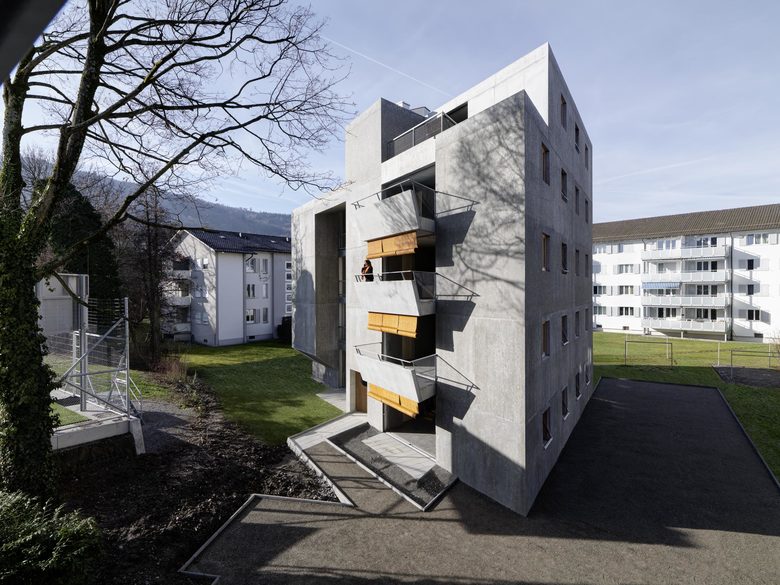

Langgrütstrasse 107 by Gus Wüstemann Architects (also header image)
Commissioned by the Baechi Foundation to create ‘affordable housing with a great quality of living,’ Swiss architecture studio Gus Wüstemann Architects has designed a low-cost housing block with a high living quality in Zurich. The structure is made up of concrete monoliths and consists of nine flats – four 60m2 two-bedroom apartments and five 95m2 three-bedroom apartments. Natural light, privacy and a spatial moment of generosity, were the focus of this project.
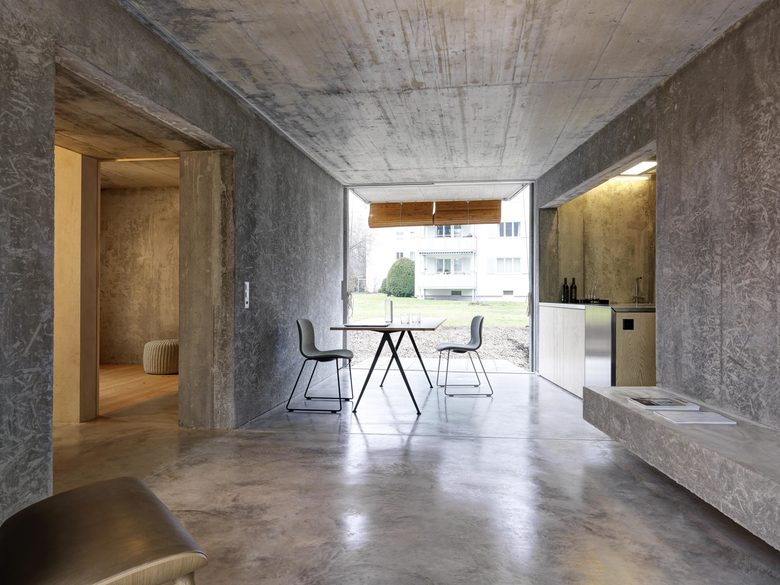
Langgrütstrasse 107 by Gus Wüstemann Architects
The building is positioned in between the simple linear buildings from the 1950s, which are arranged at right angles to one another. The structure comprises a solid concrete block, organically formed, from which two courtyards were cut out. In these courtyards the living spaces float like bridges, from the morning sun to the evening sun, which helps create the feeling that the living space is an exterior space. This results in an incredible moment of magnitude in a small space.
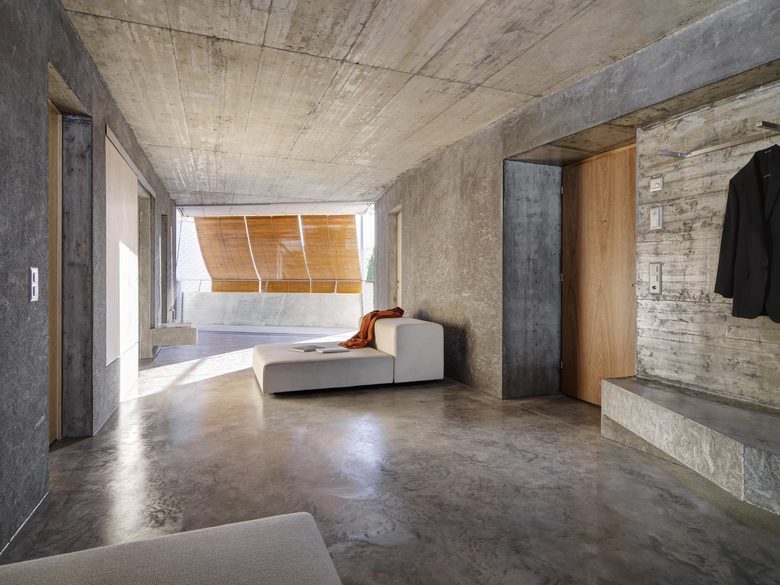

Langgrütstrasse 107 by Gus Wüstemann Architects
To ensure the rent in the building is affordable and among the cheapest in the city of Zurich, the team reduced all the technical installations of the building to a minimum – in Swiss standards. Instead, they focused on a couple of interventions that add major value to the quality of the living space. These include sliding windows and a built-in bench growing out of the bathroom wall as the communicative element in the living room.
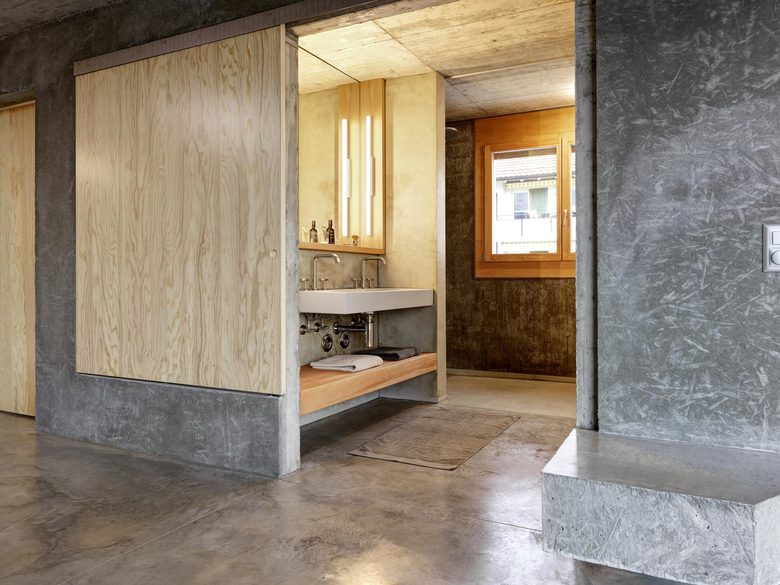
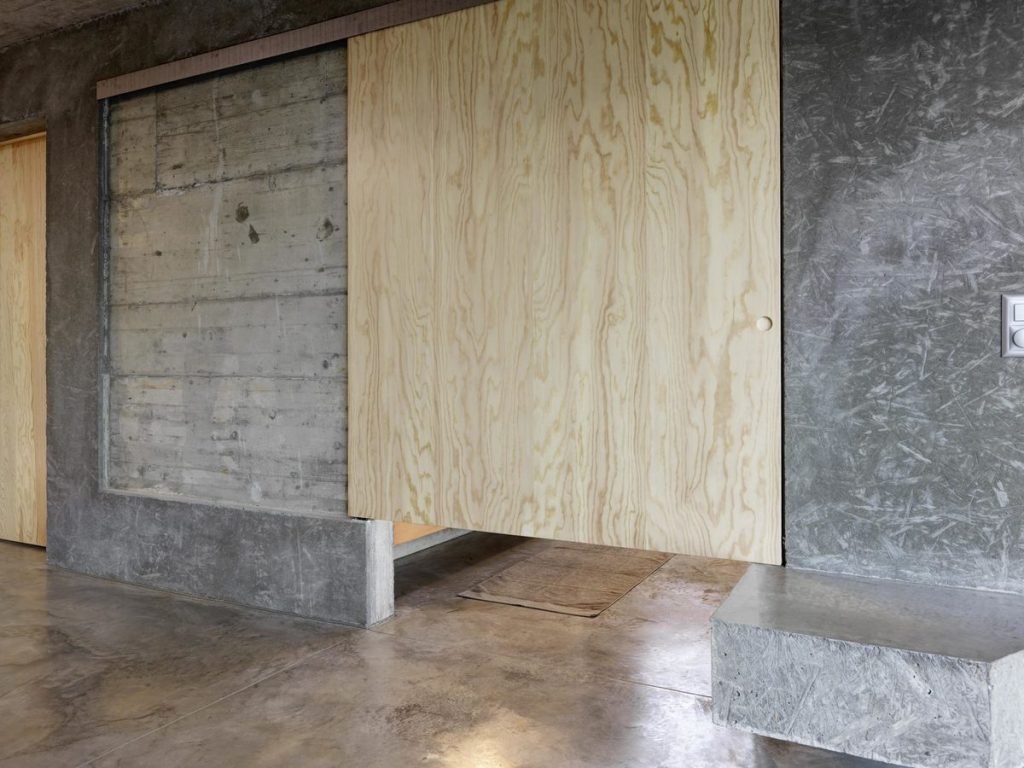
Langgrütstrasse 107 by Gus Wüstemann Architects
The bathroom of the 3-bedroom flat is separated from the common area by a sliding door, that does not touch the floor. It keeps the space floating as a common space, what it is and at the same time offers privacy to the occupants.

ReHome concept by Cutwork
Experimental architecture and design studio Cutwork based in Paris and Amsterdam has developed a concept for low-cost, modular housing that could address the increasing demand for affordable housing around the world, particularly during a crisis. Rather than building emergency shelters to house people affected by conflict or natural disasters, its ReHome concept proposes structures that would be equally effective in times of stability.
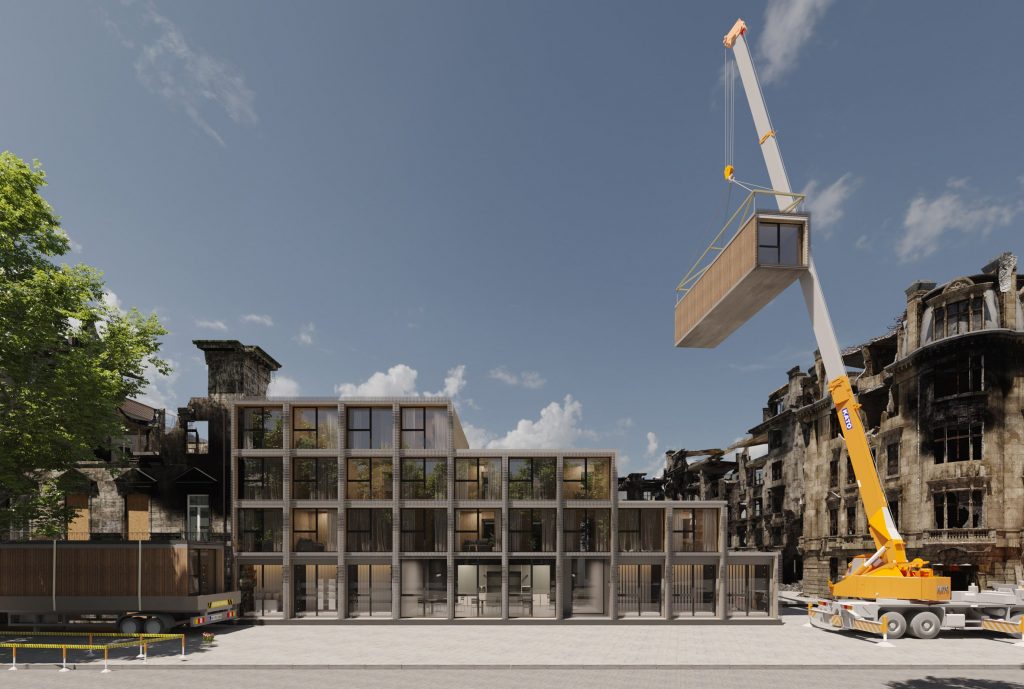
ReHome concept by Cutwork
Originally conceived in collaboration with the Deutsche Gesellschaft für Internationale Zusammenarbeit (GIZ) as a low-cost, rapid-deployment housing solution to rebuild Ukraine, the concept is relevant for addressing the growing global housing crisis, particularly within Europe and USA. Prefabrication method allows for reducing the cost dramatically for creating affordable, modular housing with economies of scale.

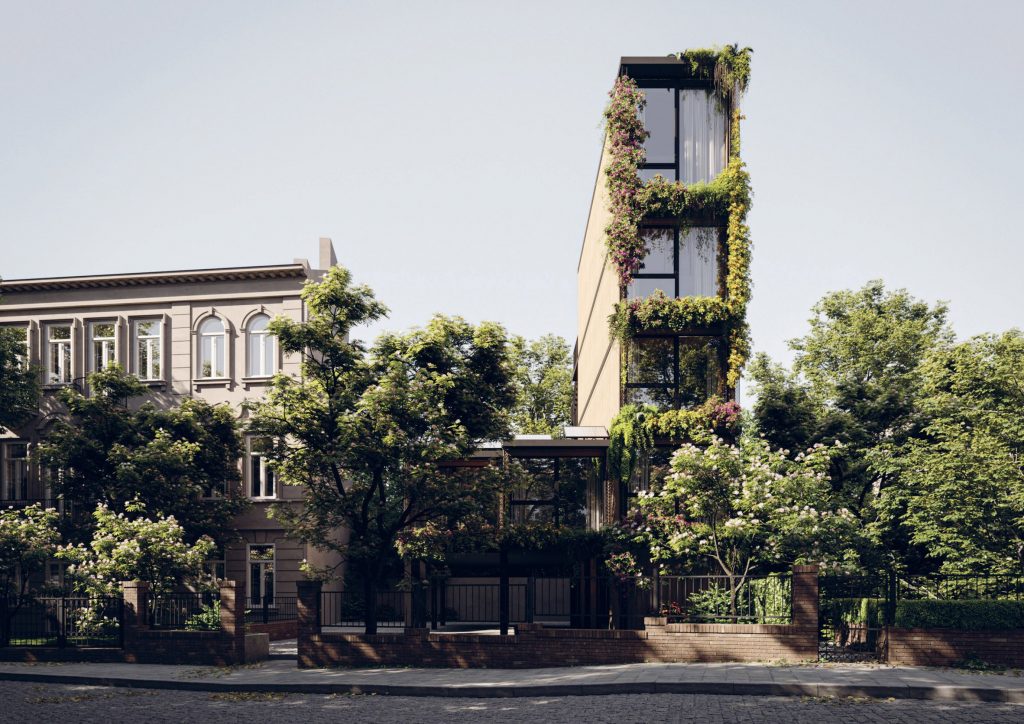
ReHome concept by Cutwork
The modular 27 sqm units can be stacked like Lego bricks to complete a full residential block up to 6 stories in significantly less time (up to 40%) than conventional construction methods. The system is expandable by removing non-load bearing walls to easily combine multiple modules and create larger units according to a wide-range of conditions and contexts. In such a way concept can offer a variety of different sized apartments and accommodate bigger numbers of inhabitants without feeling cramped.
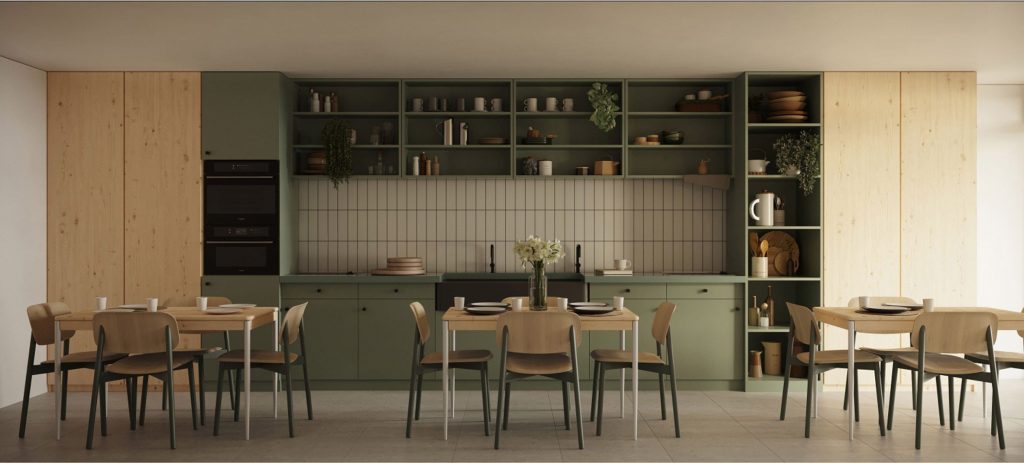
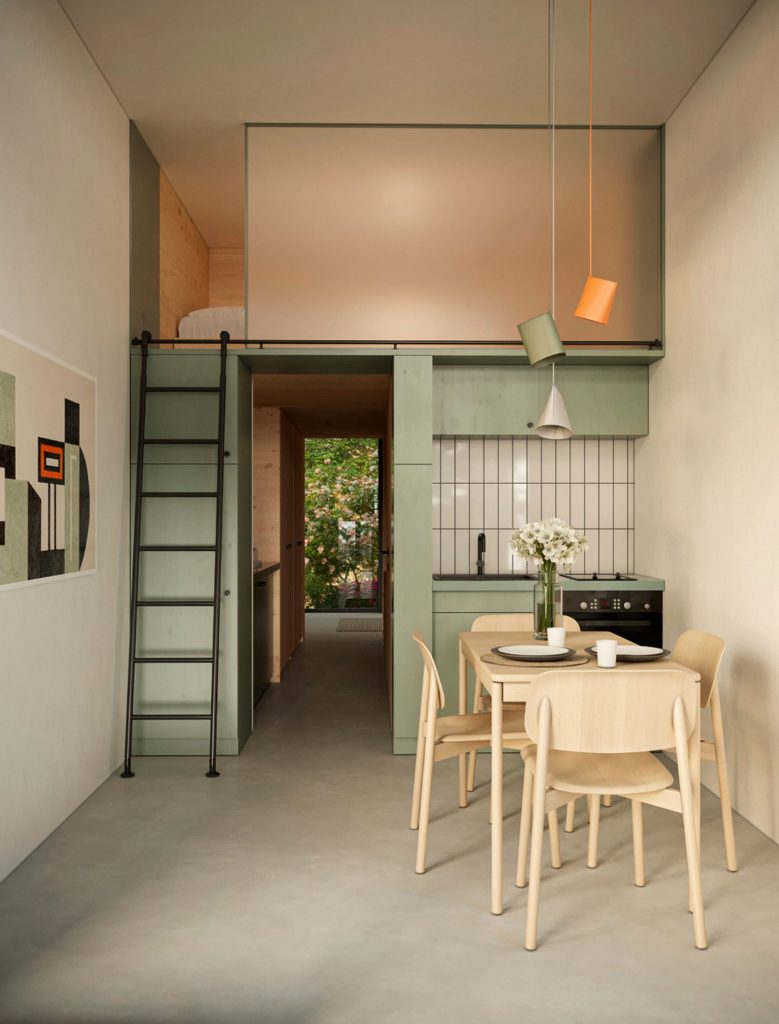
ReHome concept by Cutwork
In the standard unit, users can choose from different typologies of rooms. Instead of a fixed bed configuration they can opt for a Murphy bed with a desk, which maximizes space by folding the bed to reveal a functional workspace during the day. For maximum storage, the walk-in closet provides a spacious wardrobe within the room.
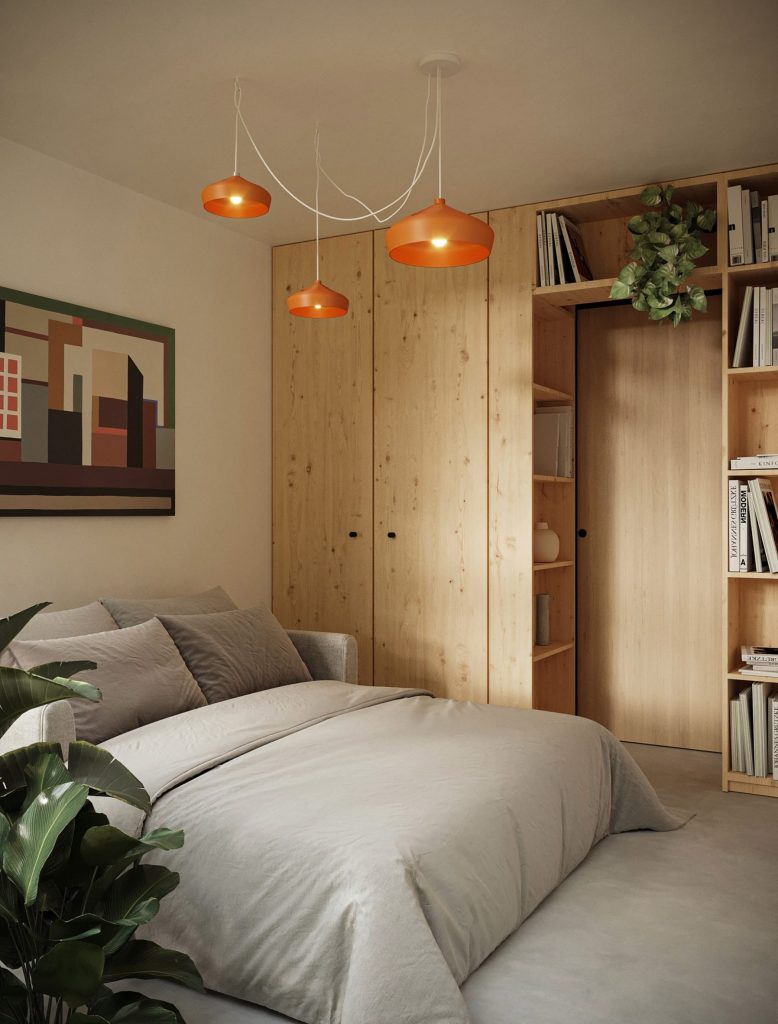
ReHome concept by Cutwork
The bathroom features a unique double-door frame system that can be closed off as a single space or opened to allow people to pass through. This allows inhabitants to use the shower, toilet, and sink independently, giving them privacy while providing access to various facilities with less need to wait.
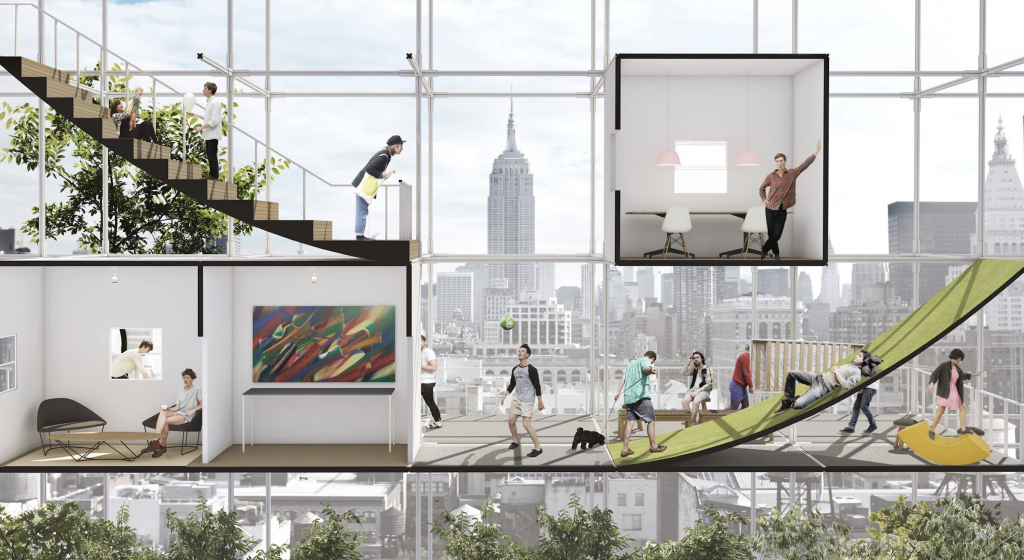
Instant City: Living Air-Right by Beomki Lee and Chang Kyu Lee
Designers Beomki Lee and Chang Kyu Lee suggest using vacant airspace over existing New York buildings to create affordable apartments and public areas. The project seeks to utilise abandoned air-right spaces as new possibilities for affordable housing in New York City where lack of home ownership in New York City has skyrocketed.
The real-estate companies can buy unused air rights over adjacent buildings in New York to construct taller or larger buildings. These rights, called Transferable Development Rights, or TDRs, were introduced around 1961 when New York’s zoning regulations were revamped.
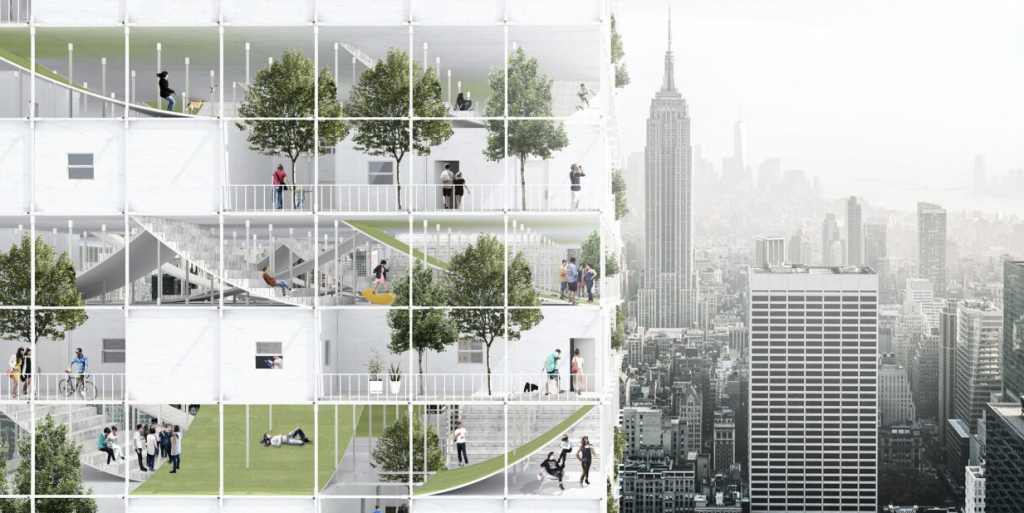
Instant City: Living Air-Right by Beomki Lee and Chang Kyu Lee
Titled Instant City: Living Air-Right, the conceptual design consists of a white, modular, grid-like structure built atop existing low-rise buildings, which combines affordable housing with public spaces for community-based activities encouraging residents to interact and share their culture. The modules for public areas include stairs, playgrounds and gardens.
With its flexible configuration that responds to the varying levels of density allowed for an individual building site, Instant City respects diverse contexts of the existing neighbourhoods in Manhattan.